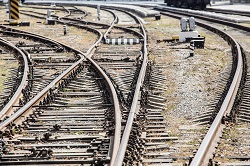Smart solutions for safer rail networks
Various measurements taken at critical fastenings are fed in real-time to a cloud-based server, where maintenance professionals can remotely monitor the condition and stability of the rail network. “Remote monitoring increases passenger safety and reduces the need to send maintenance workers into dangerous situations,” says GRAILS-SWE project manager John Evans from Smart Component Technologies in the UK. “Less signal point failure also means fewer delays.” The GRAILS-SWE project, funded through the EU’s SME Instrument, enabled Smart Component Technologies to assess the potential of expanding into Europe. “We are at the point where we are ready to carry out live deployments across the UK and are looking to scale up,” explains Evans. “The SME Instrument enabled us to carry out market analyses of four large European markets that we believe have similar potential – Germany, France, Spain and Sweden. The results have been largely positive, because not a lot of people are doing what we are doing.” Installing sensory washers at critical infrastructure points also has potential across other sectors. “The oil and gas industry for example could use real-time monitoring to ensure that flange bolting on critical and hard to access oil & gas process equipment remains secure and correctly tightened,” says Evans. “When failures occur people can die, and offshore maintenance can cost massive sums of money in addition to loss of output.” Real time tracking The sensory washer concept addresses a critical industry need. After two train derailments in the UK led to loss of life, investigations discovered that many mechanical installations at crossing points designed to stop this from happening were loose, damaged / broken or missing. Proper installation and maintenance of points that enable trains to be guided from one track to another was not being carried out in a systematic manner. Smart Component Technologies developed the sensory washer to address behavioural as well technological weakness evident in rail network maintenance. “We felt that if people can remotely control the heating of their homes, how hard can it be to know if track bolts are tight enough and if any maintenance needs to be done,” says Evans. Changing behaviour This aspect of empowering workers is for Evans just as important as the technological benefits. “We firmly believe in empowering people at the work site and giving them the correct information and correct tools to do their job to the best of their abilities,” he says. “We want to motivate the person who has to check the track at 3am in a howling gale. If in addition to actual torque / tension measurement they have a tablet that flashes a red light if a bolt is not tight enough, and a green light that confirms they have, then they know they have left the track in a compliant state, this fosters accountability and satisfaction.” This checklist concept of ensuring that the basics are done correctly has been successfully trialled in many other industry sectors including hospitals and healthcare. “This is the critical point about smart components that is often ignored,” says Evans. “We are all about putting in place the structure where you cannot get to the next step until you’ve done what you need to do and providing an audit trail of steps completed.” Smart Component Technologies is getting closer to deployment, with SME Instrument funding representing an important stepping stone along this path. “Our next step is to demonstrate the benefits of this technology in the UK, and then we’ll be ready to expand into other countries and market sectors,” concludes Evans.







